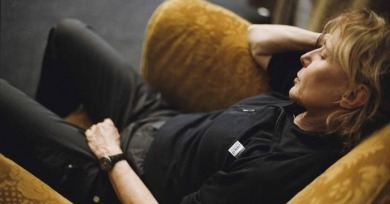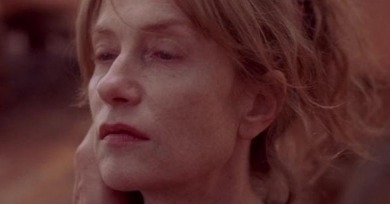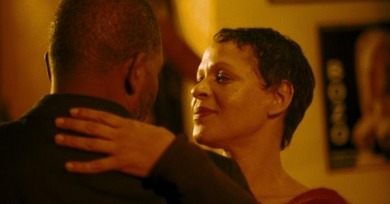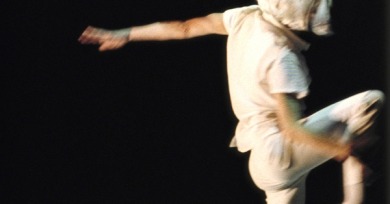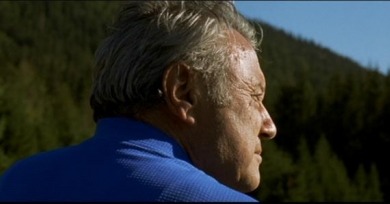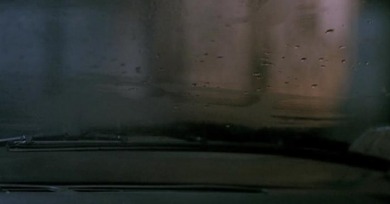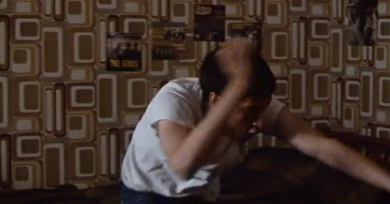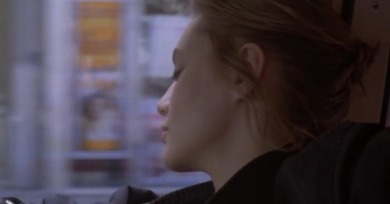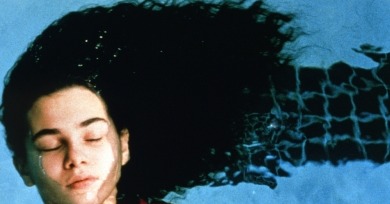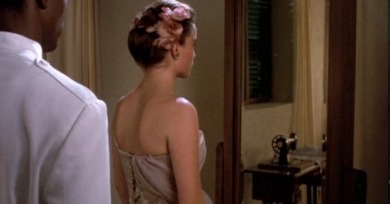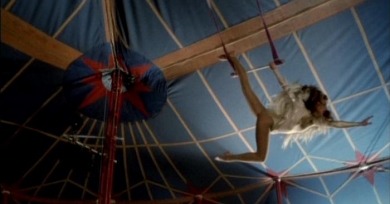Claire Denis: The Art of Seduction
For a filmmaker like Claire Denis, who traffics less in incident than in fleeting instants, less in the familiar comforts of story than in the ever-mounting pleasures of seduction, cinema is marked by slipperiness.
Claire Denis’s films usually stray so widely from anything resembling newsworthy topics that her new White Material, an experiential foray into a contemporary African crisis, risks being categorized as merely “topical.”
35 Shots of Rum is a modest enterprise. Its narrative—which borrows liberally (and undisguisedly) from Yasujuro Ozu’s Late Spring—is perfectly comprehensible on a first viewing. But it is not a retreat.
So much of Vers Mathilde, Claire Denis’s exploration of the work of Modern dance choreographer Mathilde Monnier, can be appreciated by considering what is not there, what was left out.
Music videos are the last place I would expect to find the French genius honing her craft. Yet there she was in 2006, shooting not one, but two . . .
Where, then, do Denis’s images come from? Her cinema, so often praised for its lush, visceral textures, is replete with bodies pictured unnervingly up close in disorienting, disjointed places, and L’Intrus is no exception.
With Friday Night Denis directs that attention to one woman’s experience over the course of a single night, an interstitial time out of time that would seem to be of little consequence but grows in power partly because of our awareness of and impatience with moments and opportunities squandered.
Structuring Trouble Every Day around the sensory rather than the story, Denis takes a characteristically elusive approach to narrative (later taken to its zenith in L’Intrus) devoid of most expository elements and inclined towards an atmospheric impressionism.
Denis’s narrative doesn’t move forward so much as drift along, punctuated by the semblance of eventfulness that never really coheres in a standard teleological sense.
On one level Beau travail is homoerotic because of the fetishistic gaze of its heterosexual female auteur, whose presence is all the more acutely felt for its interference in an all-male lineage of preceding authors.
Although the curious and internet-savvy cinephile can, without too much hassle, find a way to see Claire Denis’s U.S. Go Home, its perpetual medley of Sixties pop songs (and their consequent licensing headaches) has kept it from easy viewing access in the United States.
Perhaps to truly define and sculpt an image of contemporary urban living as experienced by a city’s most peripheral denizens, a filmmaker needs to get past the concreteness of the faces, sidewalks, and buildings and move into something more malleable.
The film’s characters never leave the Parisian environment into which they were born, shifting narrative tension away from cross-cultural disconnection and toward interpersonal disharmony based upon shared familial history.
This may be the most touching moment in the film, but perhaps the saddest occurs through an earlier loss, the beginning of this absence—the moment we realize Dah’s voiceover has stopped, and is no longer phasing in and out of our experience of the film.
Claire Denis came to us seemingly fully formed. Watching Chocolat, her first feature film, more than 20 years after it came out, one is struck by how unmistakably hers it is.
For those interested in Denis's work, the approximate fifteen-year period of her career when she worked as an assistant director prior to her directorial debut, is particularly useful for both its length and its pedigree.
"I’m an anxious person. What I like best is to smoke cigarettes and listen to music. A perfect day for me is a day with coffee, cigarettes, and music, to quote Jim Jarmusch."
